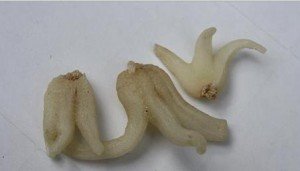Salam Panja
Description :
Marsh Orchid is a medicinal herb which is now considered critically endangered. It is a perennial herb with erect, leafy, stout and hollow stem. Leaves are oblong-lance-shaped, with sheathing base. Pink purple flowers are borne in an upright spike. Flowers are purple and the bracts green, narrowly lance-shaped, lower longer than the flowers, upper slightly shorter. Flowers are about 1.8 cm long, including the curved spur.
Marsh Orchis is found in shrubberies, open slopes and marshes, in the Himalayas, from Pakistan to SE Tibet, at altitudes of 2800-4000 m. Flowering: June-July. Roots are tuberous, divided into 2 or 3 lobes.
Botanical Name : Dactylorhiza hatagirea
English Name : Marsh Orchis
Common Name : Himalayan Marsh Orchid, Marsh Orchis, Spotted Heart Orchid
Kumaon Name : Hatajari
Kashmiri Name : Salem Panja
Ladakhi Name : Ambolakpa
Urdu Name : Salap
Nepali Name : Panch aonle
Part Used : Roots, Tubers
Medicinal Uses :
- Tubers are used as nervine tonic and aphrodisiac. It is also used to treat cuts, wounds, cough and anemia.
- Tuberous root powder is spread on wounds to control bleeding, and decoction of root is utilized in treating stomach troubles.
- Tuberous roots are tonic; pulverized and mixed with water, and applied as a disinfectant on wounds, particularly those resulting from burns.
- The tuber yields salap and is reputed as expectorant, aphrobisiac and as nervine tonic.
- Tuberous roots are eaten raw or with milk or honey, as an aphrodisiac and a vital tonic; its paste is applied on cuts and wounds for speedy healing.
- Young leaves and shoots are eaten as vegetables. Root paste is often used in promoting growth and blackness of hair .
